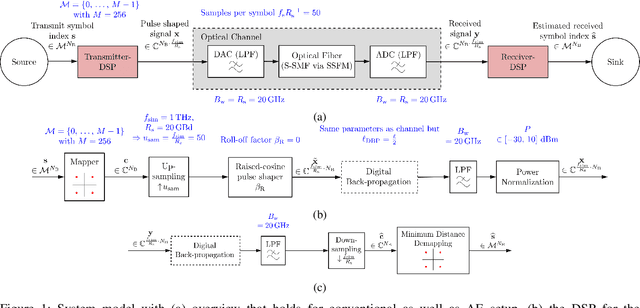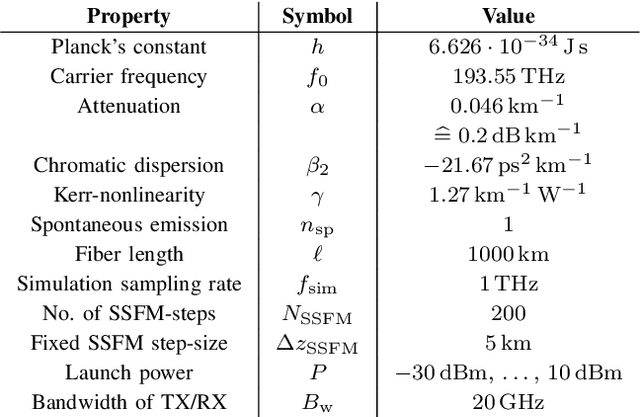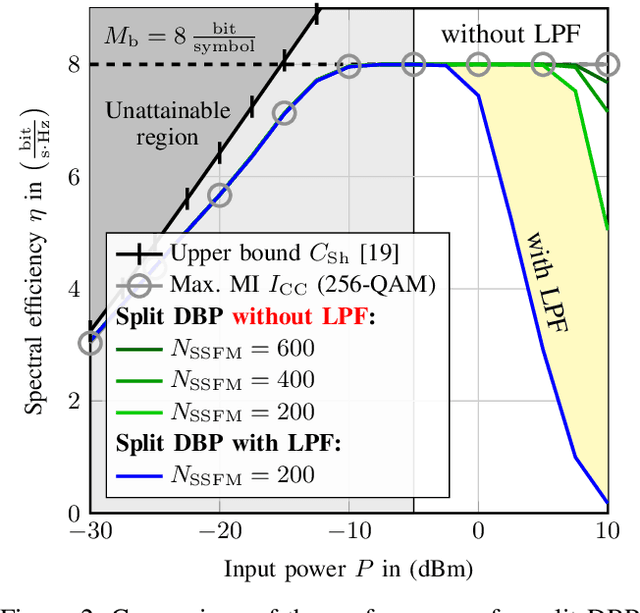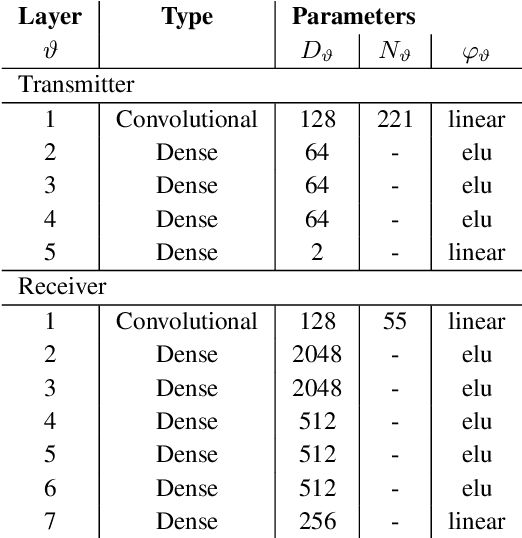Tim Uhlemann
Learning to exploit z-Spatial Diversity for Coherent Nonlinear Optical Fiber Communication
Apr 12, 2023



Abstract:Higher-order solitons inherently possess a spatial periodicity along the propagation axis. The pulse expands and compresses in both, frequency and time domain. This property is exploited for a bandwidth-limited receiver by sampling the optical signal at two different distances. Numerical simulations show that when pure solions are transmitted and the second (i.e., further propagated) signal is also processed, a significant gain in terms of required receiver bandwidth is obtained. Since all pulses propagating in a nonlinear optical fiber exhibit solitonic behavior given sufficient input power and propagation distance, the above concept can also be applied to spectrally efficient Nyquist pulse shaping and higher symbol rates. Transmitter and receiver are trainable structures as part of an autoencoder, aiming to learn a suitable predistortion and post-equalization using both signals to increase the spectral efficiency.
Introducing $γ$-lifting for Learning Nonlinear Pulse Shaping in Coherent Optical Communication
Jul 13, 2022



Abstract:Pulse shaping for coherent optical fiber communication has been an active area of research for the past decade. Most of the early schemes are based on classic Nyquist pulse shaping that was originally intended for linear channels. The best known classic scheme, the split digital back-propagation (DBP), uses joint pre-distortion and post equalization and hence, a nonlinear transmitter (TX); it, however, suffers from spectral broadening on the fiber due to the Kerr-effect. With the advent of deep learning in communications, it has been realized that an Autoencoder can learn to communicate efficiently over the optical fiber channel, jointly optimizing geometric constellations and pulse shaping - while also taking into account linear and nonlinear impairments such as chromatic dispersion and Kerr-nonlinearity. E.g., arXiv:2006.15027 shows how an Autoencoder can learn to mitigate spectral broadening due to the Kerr-effect using a trainable linear TX. In this paper, we extend this linear architectural template to a scalable nonlinear pulse shaping consisting of a Convolutional Neural Network at both transmitter and receiver. By introducing a novel $\gamma$-lifting training procedure tailored to the nonlinear optical fiber channel, we achieve stable Autoencoder convergence to pulse shapes reaching information rates outperforming the classic split DBP reference at high input powers.
 Add to Chrome
Add to Chrome Add to Firefox
Add to Firefox Add to Edge
Add to Edge